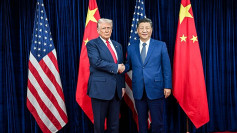China will soon begin the difficult process of establishing what it calls a "science and technology innovation board," a NASDAQ-style board intended to make it easier for mainland firms to launch initial public offerings (IPOs).
Adopting a loosely regulated, Western-type "registration-based IPO system" should give market forces in China a dominant role in deciding when a company can sell shares publicly. This board, which will be located at the Shanghai Stock Exchange, should also diminish the regulatory interference facing many Chinese firms wanting to IPO. Under the system now in place, all Chinese IPOs must be vetted and approved by government regulators.
Located in New York, NASDAQ is the second-largest stock exchange in the world by market capitalization. It's heavily weighted towards technology stocks, which while more volatile than blue chips, tend to reward investors with bigger returns.
The move to establish China's first technology innovation board was announced yesterday by president Xi Jinping at the start of the China International Import Expo in Shanghai. Xi gave few details but did say the new board will adopt a registration-based IPO system, a significant concession that seems to reduce government control over who can IPO.
Following-up Xi's declaration, the China Securities Regulatory Commission (CSRC) said the new board is intended to bolster weak links in China's capital markets, especially those having to do with technology and innovation.
CSRC said it will develop the board's new rules, including differentiated arrangements concerning profitability requirements and shareholding structures. These new rules should allow for enhanced tolerance and adaptability for innovative businesses.
China hopes the technology innovation board will entice Chinese technology companies to list onshore instead of floating IPOs at overseas markets due to their failure to meet Chinese earnings requirements. CSRC believes the new technology innovation board will provide the key missing piece in China's financial reforms. In the long-run, this board should become the lifeblood of an innovation-oriented economy and will offer a financial lifeline to innovative firms that drive growth
Chinese economic analysts said Xi's announcement of this NASDAQ-style board confirms Beijing's continuing push for capital market reforms. These market reforms should channel urgently needed financing to businesses that shoulder the weight of driving the innovative growth China needs to advance its economy.
The proposal for the technology innovation board is also being seen as a sign of the government's support for the private sector while encouraging innovation. It's also seen as a tool for mitigating the impact of Trump's trade war.






